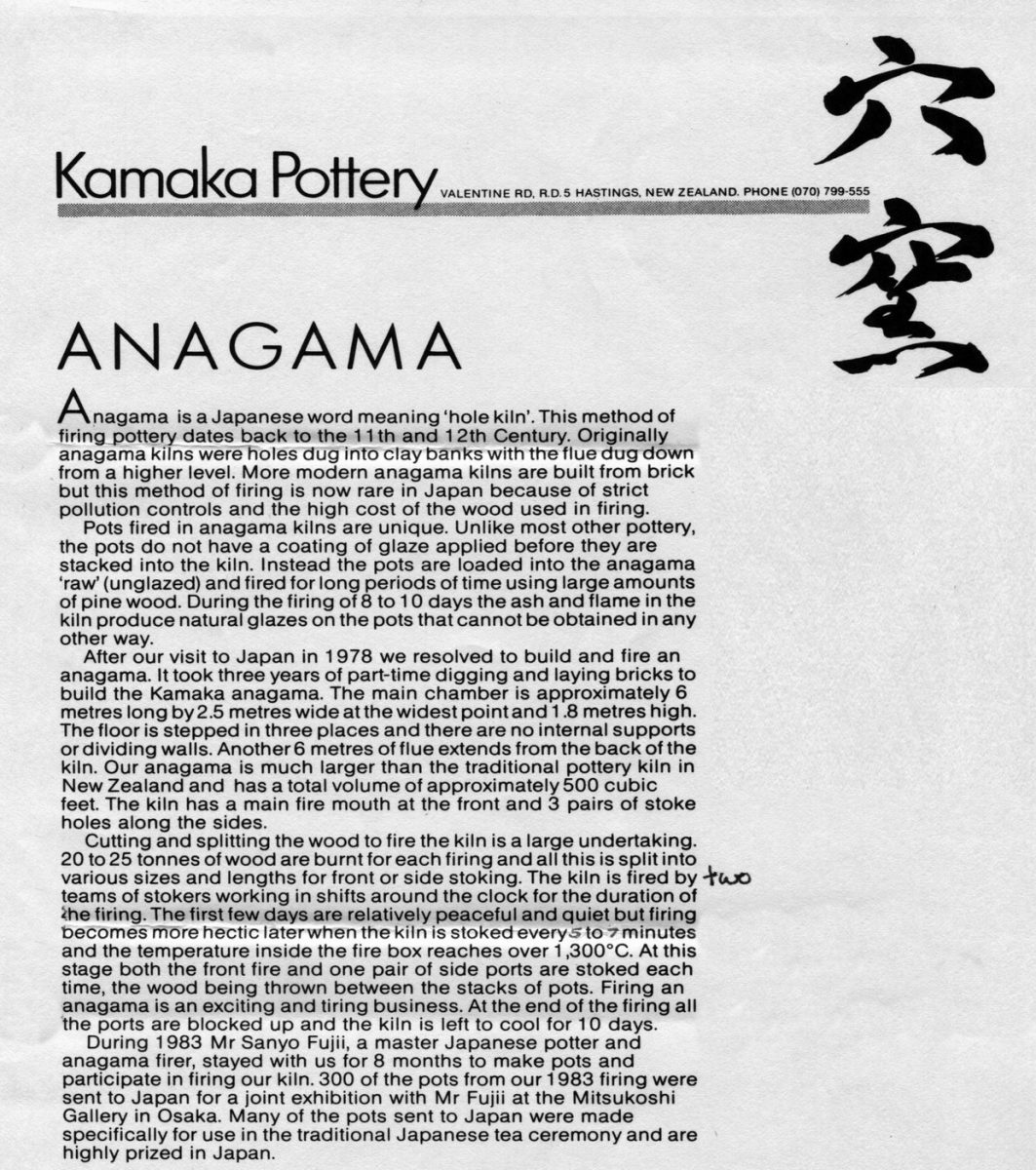Kamaka Pottery
VALENTINE RD, R.D.5 HASTINGS, NEW ZEALAND. PHONE (070) 799-555
ANAGAMA
Anagama is a Japanese word meaning ‘hole kiln’. This method of firing pottery dates back to the 11th and 12th Century. Originally anagama kilns were holes dug into clay banks with the flue dug down from a higher level. More modern anagama kilns are built from brick but this method of firing is now rare in Japan because of strict pollution controls and the high cost of the wood used in firing.
Pots fired in anagama kilns are unique. Unlike most other pottery, the pots do not have a coating of glaze applied before they are stacked into the kiln. Instead the pots are loaded into the anagama ‘raw’ (unglazed) and fired for long periods of time using large amounts of pine wood. During the firing of 8 to 10 days the ash and flame in the kiln produce natural glazes on the pots that cannot be obtained in any other way.
After our visit to Japan in 1978 we resolved to build and fire an anagama. It took three years of part-time digging and laying bricks to build the Kamaka anagama. The main chamber is approximately 6 metres long by 2.5 metres wide at the widest point and 1.8 metres high. The floor is stepped in three places and there are no internal supports or dividing walls. Another 6 metres of flue extends from the back of the kiln. Our anagama is much larger than the traditional pottery kiln in New Zealand and has a total volume of approximately 500 cubic feet. The kiln has a main fire mouth at the front and 3 pairs of stoke holes along the sides.
Cutting and splitting the wood to fire the kiln is a large undertaking. 20 to 25 tonnes of wood are burnt for each firing and all this is split into various sizes and lengths for front or side stoking. The kiln is fired by two teams of stokers working in shifts around the clock for the duration of the firing. The first few days are relatively peaceful and quiet but firing becomes more hectic later when the kiln is stoked every 5 to 7 minutes and the temperature inside the fire box reaches over 1,300°C. At this stage both the front fire and one pair of side ports are stoked each time, the wood being thrown between the stacks of pots. Firing an anagama is an exciting and tiring business. At the end of the firing all the ports are blocked up and the kiln is left to cool for 10 days.
During 1983 Mr Sanyo Fujii, a master Japanese potter and anagama firer, stayed with us for 8 months to make pots and participate in firing our kiln. 300 of the pots from our 1983 firing were sent to Japan for a joint exhibition with Mr Fujii at the Mitsukoshi Gallery in Osaka. Many of the pots sent to Japan were made specifically for use in the traditional Japanese tea ceremony and are highly prized in Japan.












Do you know something about this record?
Please note we cannot verify the accuracy of any information posted by the community.